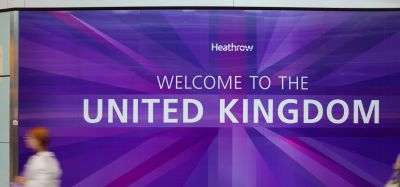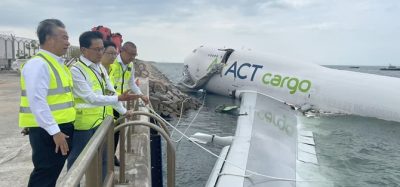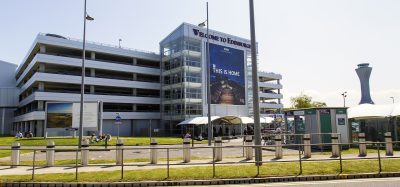Lessons learned from the Great East Japan Earthquake
Posted: 22 March 2016 | Shigeru Uno, Narita International Airport | 3 comments
Buildings swayed alarmingly for around two minutes in Tokyo, which is about 250km from Tōhoku. Earthquakes occur frequently in Japan, but the initial shock and subsequent shaking was so strong with this one people soon realised it was serious. And then the tsunami hit.
Following the Great East Japan Earthquake in 2011, which claimed more than 16,000 lives, Japan’s Tōhoku region has worked extensively to create emergency response drills based on the most realistic scenarios that can be envisaged.
Japan’s Tōhoku region was hit by a catastrophic earthquake just before 3pm on 11 March 2011. The damage caused by the largest earthquake of the 20th century was exacerbated by the tsunami that followed. The epicentre of the earthquake was off the coast of Tōhoku, which was badly damaged and more than 16,000 people were killed.
Buildings swayed alarmingly for around two minutes in Tokyo, which is about 250km from Tōhoku. Earthquakes occur frequently in Japan, but the initial shock and subsequent shaking was so strong with this one people soon realised it was serious. And then the tsunami hit.
Join us live: Shaping the Next Generation of Hold Baggage and Air Cargo Screening
Join us live for an insightful webinar on 11th December at 14:00 GMT, in collaboration with Smiths Detection, as we explore the strategic balance of operational efficiency, regulatory compliance, and sustainability in high-volume security environments.
This session offers a focused look into future-proofing your security strategy.
Key learning points
- Cost Reduction: Strategies to minimize bag travel time while simultaneously reducing operational costs.
- Regulatory Roadmap: Insights into the next wave of regulatory changes and their impact on future investment decisions.
- Sustainable Systems: Practical approaches to building sustainability into security systems and lowering the total cost of ownership (TCO).
- Scalable Solutions: Real-world examples of scalable systems supporting current airport growth and preparing for tomorrow.
Register now for expert insights, case studies, and actionable strategies on operational efficiency!
The Ministry of Land, Infrastructure, Transport and Tourism (MLIT) Civil Aviation Bureau (CAB) established a Disaster Response Headquarters as soon as the earthquake occurred. The main role of the CAB’s Disaster Response Headquarters was to facilitate the recovery of airports hit by the earthquake and to ensure that transportation of relief supplies from airports in the Tokyo metropolitan area ran efficiently.
Information collection chaos
The first task of the Disaster Response Headquarters was to collect information, but we were unable to do so. With a population of 120 million people Japan is a small but heavily crowded country. As soon as the earthquake occurred, huge numbers of people who were worried about the safety of their friends and relatives started using their mobile phones and it subsequently became impossible to make calls or send emails.
The simultaneous use of mobile phones on such a scale was unprecedented. Overseas, the bandwidth used for mobile communications is often unstable even in large cities, but it never fails in Japan’s urban areas.
The Japanese pursue maximum convenience in everything. In Tokyo, you can satisfy almost any immediate need at any time of the day or night. As the Japanese people are used to this level of convenience, the simple fact that mobile phones were not working made them very apprehensive.
The Disaster Response Headquarters set up hotlines and TV telephones, but communications systems were not functioning normally and it therefore took a very long time to gather information.
Narita Airport
Due to the extreme congestion in the surrounding areas it took a long time for vehicles to get into Narita Airport. The airport company actually began distributing bicycles to staff living nearby. And having considered the various options since, we still believe bicycles are the most effective way of getting to the airport quickly during traffic jams following disasters.
Today, airlines and airport security companies on the ground tend to use wireless communication systems, but at the time of the earthquake most employees used mobile phones. Nobody had anticipated that cases like this would make it impossible to use mobile phones on such a large scale. Only the police, the airport company, and the security companies were able to use hotlines and transceivers, that are completely unaffected by external interference, for communications between them.
After the earthquake, we conducted a thorough review of the communications facilities in use at the airport. And after around 10,000 passengers had to spend the night at the airport terminals because all public transport had come to a halt, we also conducted a review of emergency blanket, food and water stocks.
So from the perspective of ensuring airport safety, how should we deal with earthquakes?
I believe we must resolutely confront the shortcomings that this earthquake exposed in the Japanese people.
Japanese heritage
Broadly speaking, the world’s cultures can be divided into hunting cultures like the United States, and farming cultures like Japan. For several thousand years Japan has been an agricultural country based on rice cultivation. People from a ‘hunting’ culture have to be ready to respond to changes at all times – leaders in these cultures are expected to be challengers.
On the other hand, a farming culture places much more emphasis on performing predetermined tasks precisely than coping with change. Leaders are expected to build a consensus rather than pull the group along behind them. While agriculture may no longer be a major industry in Japan, but the farming culture is deeply embedded into Japanese people.
There was absolutely no looting or rioting in the region hit by the 2011 earthquake. Stores voluntarily distributed their products to the local people, who lined up in an orderly fashion and accepted them gratefully.
Aware of the suffering in the disaster area, people in Tokyo endured power cuts, and the food and gasoline shortages that continued for some time after without complaint. The entire nation accepted that it had to overcome the difficulties. This demonstrated the extremely admirable agricultural side of the Japanese people.
However, we must also confront the shortcomings of the Japanese, who can be somewhat lacking in the ability to adapt to unexpected situations flexibly.
Following the earthquake there were many reports that towns’ and villages’ disaster manuals did not function as expected as they proved to be unusable in the field as their provisions were too detailed.
To this end, Narita Airport’s disaster manual also did not function adequately on-site. The manual had no clear procedures for reopening the airport following a disaster and it therefore proved difficult to make the decision to recommence operations decide to bring the travellers who had evacuated the terminal building back indoors.
Obviously, events never occur as envisaged in the manual, but the Japanese tend to relax if a manual is available; incorrectly assuming that drawing up a manual is the same as adopting disaster response measures.
We considered this issue with the people concerned, and discussed it exhaustively. In the end, we concluded that the only way to deal with the situation was to create a simple manual and repeat practical drills constantly.
Pre-established ‘harmony drills’ vs. new, challenging drills
Generally speaking, drills in Japan follow pre-established scenarios and are seen as a way of reassuring the relevant organisations that they function as originally envisaged. The participating organisations are more concerned about appearances, and focus on completing the drill without problems.
However, the earthquake made us realised that this approach is problematic and that we will never be able to create sites that can cope with emergencies adequately unless it is corrected. We have therefore radically reformed the concepts behind our drills, and made the transition to exercises where participants act without slavish adherence to scenarios.
Participants were initially bewildered and struggled to adapt to these changing circumstances. But the awareness of the participants began to change the more drills were repeated. People came to the realisation that the significance of drills lies in discovering problems and that drills were gradually uncovering increasingly complicated issues. The most important outcomes are to ensure that more people think for themselves, envisage possible cases, and talk about them to the people involved.
Japan is a safe country. There are no major aircraft accidents, and terrorist acts do not occur. As a result, it is not easy to envisage actual cases. In reality, the disasters most likely to occur in Japan are natural disasters such as earthquakes.
Using these earthquake response drills as a starting point, we are extending this approach to aircraft accident response drills, and terrorism response drills. The Great East Japan Earthquake has led me to two very important conclusions: The first is that we must develop emergency response drills based on the most realistic scenarios we can envisage for the country in question. The second is that we must design drills that focus on the shortcomings of the people of the country. Narita International Airport is in the process of enhancing its ability to respond to emergencies through new-style drills.
Biography
Shigeru Uno, Deputy Vice President, Security Department, Narita International Airport
Since 2002, Shigeru Uno has been involved in the field of aviation security. He developed Japan’s airport security programme and the security training system at Narita Airport. In doing so he has successfully raised the level of security awareness, not only among security personnel but also among the entire airport workforce. Mr Uno participates enthusiastically in education and training activities at regional airports in Japan and at airports in Asia. He is also a member of ACI World.
Stay Connected with International Airport Review — Subscribe for Free!
Get exclusive access to the latest airport and aviation industry insights from International Airport Review — tailored to your interests.
✅ Expert-Led Webinars – Gain insights from global aviation leaders
✅ Weekly News & Reports – Airport innovation, thought leadership, and industry trends
✅ Exclusive Industry Insights – Discover cutting-edge technologies shaping the future of air travel
✅ International Airport Summit – Join our flagship event to network with industry leaders and explore the latest advancements
Choose the updates that matter most to you.
Sign up now to stay informed, inspired, and connected — all for free!
Thank you for being part of our aviation community. Let’s keep shaping the future of airports together!


















Two comments:
“Japan is a safe country. There are no major aircraft accidents, and terrorist acts do not occur. As a result, it is not easy to envisage actual cases….”
The world’s third worst aircraft disaster occurred in Japan – August 12th 1985 with 520 deaths. It would be useful to examine this disaster with regard to the response by authorities. Didn’t they postpone rescue attempts because it was at night? Didn’t they decline help from the American Forces in Japan who had equipment that could have been used immediately?
As for terrorist attacks – the Sarin Gas mass murder attempt in Tokyo in the early 90s would qualify as would other various attacks perpetrated by individuals running amok with knives.
We could be happy that the terrorist are still act with bombs and normal weapons. In future they will use biological desease bacterias and enter the Water supply or cooling systems and Airsystems of Buildings and areas. If they poisen the airport food annd drinking water systems for employees or restaurants or enter into service systems inside food supply in Aircrafts we are not able to response in time.
I think we have to reorganize the areas on international airports for public entries and Pax entries from point of entering to take over the luggage and handel that up to the flight from outside the terminals already.
and so on. lets see what happen in near future. We learned already that some of them didnt bomb themselves and this will be main point to change behaviour in future.
regards Reinhard
Another method for seismic retrofitting of structures is covering the damaged area with FRP materials which has gained notable acceptance from the civil engineering community in recent years. FRP composite materials possess superior mechanical properties including: Impact resistance, strength, stiffness, flexibility and the ability to carry loads.